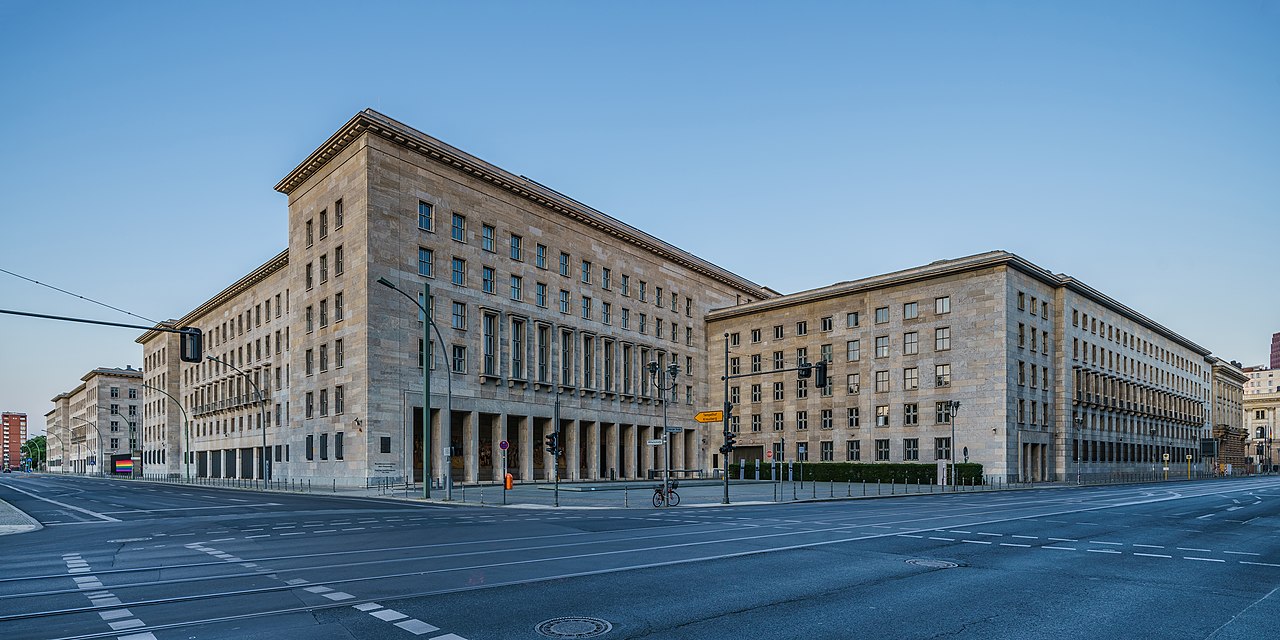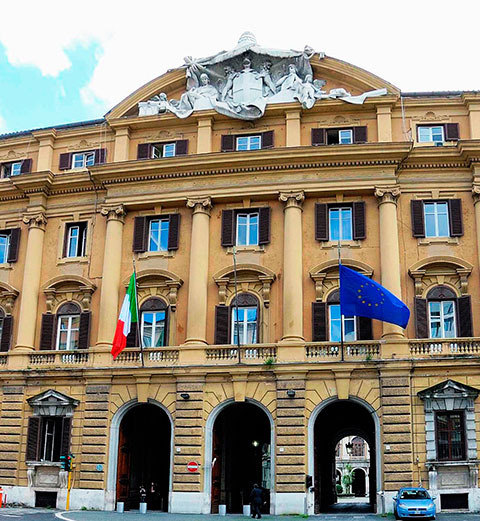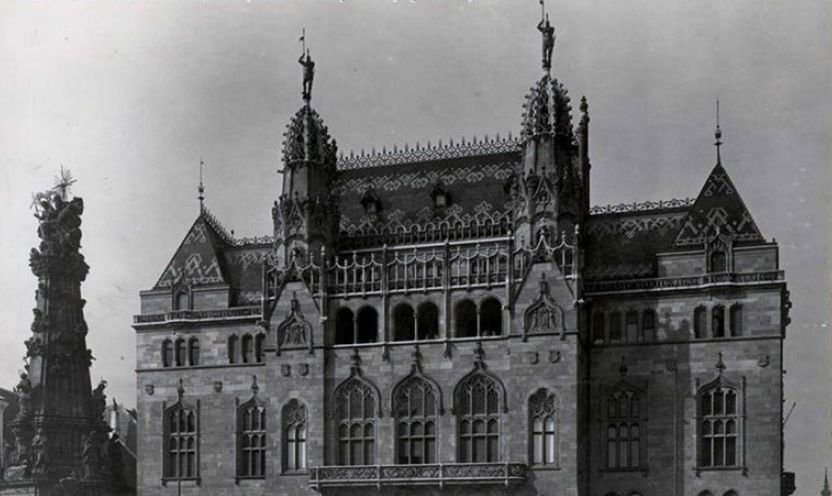Our country developed at a dizzying pace in the second half of the 19th century, which was spectacularly expressed by the population growth of our capital: at the time of the unification of the capital in 1873, the population was barely over three hundred thousand, but by the end of the century, it had doubled. The number of buildings also grew rapidly, and the architects working at that time often based their work on foreign models.

Friedrich von Schmidt: Church of Mary the Victorious in Vienna (Source: wikipedia.org)
For example, Imre Steindl borrowed the dome of the Parliament from the Church of Mary the Victorious (Kirche Maria von Siege) in the Fünfhaus district of Vienna, and the Curia of Alajos Hauszmann was inspired by the Reichstag in Berlin. Several of the architects themselves were of foreign origin - mainly German - and had received foreign education, so it can be said that Budapest, which became a metropolis, was heavily influenced by foreign countries.

Paris, 234-244 rue de Rivoli, the former palaces of the French Ministry of Finance (Source: Google Street View)
This is no longer the case for the Ministries of Finance, our building in the Castle does not follow foreign examples. The French Ministry of Finance is quite different: in Paris during the 19th century, the ministry operated in the building at 234-244 rue de Rivoli, built between 1815 and 1824 - originally for tenements. The two extensive buildings were located between rue de Castiglione and rue Cambon. Both face the Tuileries Garden with extremely long, monotonous facades, which are examples of classicism. The six-story buildings are divided horizontally by accentuated cornices, but in the vertical direction this is only realized in the semi-circular arcade row that divides the ground floor and mezzanine.

Paris, today's seat of the Ministry of Finance (Source: wikipedia.org)
They burned down during the Commune of 1871, and although they were rebuilt, the ministry was moved to the Richelieu wing of the Louvre. It operated here until the 1980s, when it was relocated to its new headquarters built on the banks of the Seine in the Bercy district. The southwest wing of the building, named after Jean-Baptist Colbert - the finance minister of King Louis XIV, actually extends into the river, its foundation is in its bed. Not only is its location futuristic, but so is its appearance: as if a huge, angular ship is unfolding before our eyes.

Until recently, the Ministry of Finance in Vienna operated in a baroque building (Source: wikipedia.org)
The Imperial and Royal Ministry of Finance was established in Vienna in 1848, which was located in the winter palace of Prince Eugene of Savoy. The Baroque palace in Himmelpfortgasse was built according to the plans of Fischer von Erlach in 1695 and completed by Johann Lukas von Hildebrandt in 1724. After the death of the prince, Mária Terézia took it into imperial care in 1738, and in 1752 it was converted into state offices according to the plans of Nicoló Pacassi. The Ministry of Finance carried out large-scale restoration work on it between 2007 and 2013, and since then a part of the building has been opened to visitors. The long, three-story building has high gates spanning two levels, and the upper two levels are connected by pilasters and divided into sections. Although its windows are mostly straight, on the second floor they are surrounded by rich decoration worthy of the Baroque.

The grandiose building of the German Ministry of Finance (Source: wikipedia.org)
In Germany, the organization that centrally supervises financial affairs was created only after the establishment of the unified state in 1871, but not immediately: the establishment of the state secretariat responsible to the chancellor was delayed until 1880. Its headquarters were on Berlin's Wilhelmplatz, and the building it uses today is not far from there: it is the Detlev–Rohwedder-Haus stretching along Wilhelmstrasse. Built between 1935 and 1936, the huge building was once the largest office building in the world, representing the megalomania of Nazi Germany. The 250-meter-long, seven-story monster - whose 2,800 offices are illuminated by more than 4,000 windows - was originally built for the Luftwaffe, led by Hermann Göring, according to the plans of Ernst Sagebiel. It shows signs of imperial architecture: it looks to the Roman Empire as a prototype, but ancient classicism is also mixed with the puritanism of modernism. After World War II, it was transferred to the eastern part of the city belonging to the communist bloc, but it was still used for government purposes. The Ministry of Finance moved here in 1999.

Palace of the Italian Ministry of Finance (Source: mef.gov.it)
In Italy, too, the Ministry of Finance was formed in the 1870s, and in 1876 its palace was built according to Raffaele Canevari's plans. This huge neo-baroque building stands on Rome's Quirinale hill, at 20 Via Settembre, and it shows the Italians' love for art: its facades are decorated with reliefs by famous sculptors (Ercole Rosa and Pietro Costa), and its courtyard is refreshed by Francesco Pieroni's fountain. The allegorical compositions are not only pleasing to the eye, but also indicate the function of the building. Its three-story facade covered with yellow plaster is divided by huge half-columns, and the windows are crowned with segmental arches and triangular tympanums. Sala Ciampi and Sala Parlamentino stand out among its ornate interiors.

Sala Ciampi is decorated with works of art (Source: mef.gov.it)
Of course, we could continue the series, but for now we have only presented those nations that have historically influenced the cultural and artistic development of Hungary to the greatest extent. Based on the examples above, we can say that the Ministries of Finance operate in buildings typical of the countries: the French in a form-breaking one, the German in a grandiose one, the Austrian in an ornate baroque one, and the Italian building is piled with works of art. The old-new building of our Ministry of Finance will fit into this trend, since although its exterior is neo-Gothic - also due to the harmonization with the neighbouring Matthias Church - the interior decoration is inspired by the flora of the Hungarian land. By the way, this duality was typical of Hungarian architecture at the turn of the century, and can be observed, among other things, in the building of the Parliament.
Cover photo: The headquarters of the Hungarian Royal Ministry of Finance at the beginning of the 20th century https://pestbuda.hu/cikk/20211203_elegans_termeket_rejtt_a_pompas_neogotikus_kulso_a_penzugyminiszterium_belso_terei (Source: FSZEK Budapest Collection)




































Hozzászólások
Log in or register to comment!
Login Registration